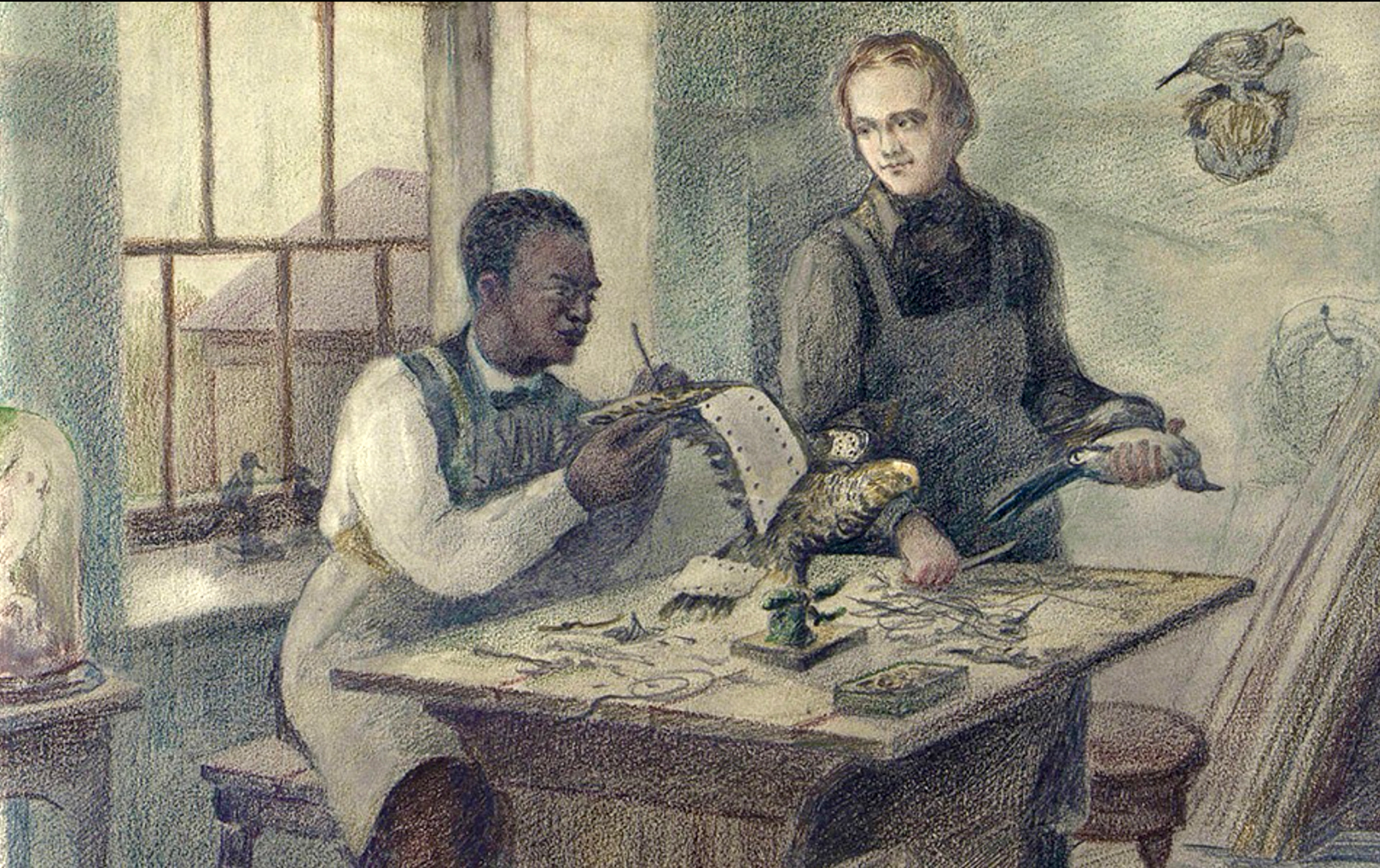John Edmonstone was a Guyanese-born enslaved person and taxidermist who later became a taxidermy teacher in Edinburgh, Scotland. Edmonstone was best known as a mentor of young Charles Robert Darwin, who would become a renowned naturalist and geologist. Edmonstone was born into slavery on a wood plantation in Demerara, British Guiana (now Guyana, South America). He was given the surname of his enslaver, Charles Edmonstone. In 1812, naturalist Charles Waterton visited the plantation where Edmonstone was enslaved. Waterton spent time teaching Edmonstone taxidermy.
In 1817, Edmonstone relocated to Scotland with his master while serving the Edmonstone family at the Cardross Park estate, near Dumbarton. He would later gain his freedom and take employment in Glasgow, Scotland. In 1823, he moved to Edinburgh, Scotland, where he set up shop as a bird-stuffer at 37 Lothain Street. Edmonstone taught taxidermy to students at the University of Edinburgh. One of his students was Charles Darwin, who was 15 at the time. Darwin came to the University of Edinburgh initially to study medicine but began taking lessons from Edmonstone on bird taxidermy, paying one guinea a lesson. During the sessions, Edmonstone told Darwin stories about tropical rainforests in South America. Edmonstone influenced Darwin’s interests in naturalism and encouraged him to explore that area of knowledge. Edmonstone later helped Darwin during the second voyage of HMS Beagle to South America from 1831 to 1836. Despite Edmonstone’s influence on Darwin’s early education, the now increasingly famous naturalist failed to mention him by name in his research or his memoirs.
Much of Edmonstone’s life after 1836 is unknown as is the date of his death. What is known that he worked for the Royal Museum of the University (now the National Museum of Scotland) in Edinburgh, Scotland. He also prospered enough to be able to move his taxidermy shop to Edinburgh’s main commercial district, first 29 and then 66 Princes Street. In the 1840s he moved his taxidermy shop again, this time to 10 South St David’s Street.
In 2009, a plaque was commission by the historians, scientists, and artists and located on King Place in London to commemorate Edmonstone. He is also regarded as one of the 100 Greatest Britons of African ancestry.

